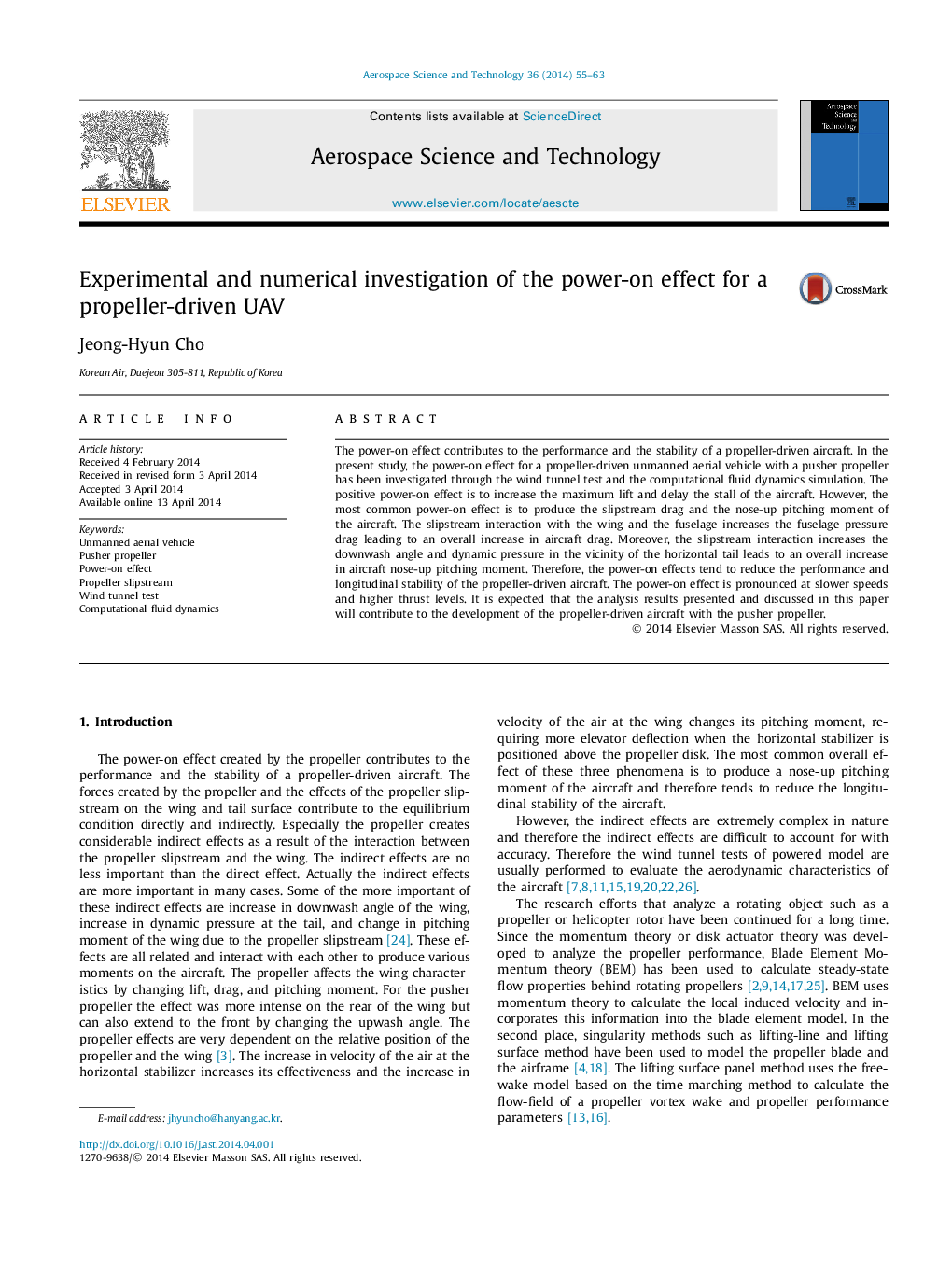| Article ID | Journal | Published Year | Pages | File Type |
|---|---|---|---|---|
| 1718066 | Aerospace Science and Technology | 2014 | 9 Pages |
The power-on effect contributes to the performance and the stability of a propeller-driven aircraft. In the present study, the power-on effect for a propeller-driven unmanned aerial vehicle with a pusher propeller has been investigated through the wind tunnel test and the computational fluid dynamics simulation. The positive power-on effect is to increase the maximum lift and delay the stall of the aircraft. However, the most common power-on effect is to produce the slipstream drag and the nose-up pitching moment of the aircraft. The slipstream interaction with the wing and the fuselage increases the fuselage pressure drag leading to an overall increase in aircraft drag. Moreover, the slipstream interaction increases the downwash angle and dynamic pressure in the vicinity of the horizontal tail leads to an overall increase in aircraft nose-up pitching moment. Therefore, the power-on effects tend to reduce the performance and longitudinal stability of the propeller-driven aircraft. The power-on effect is pronounced at slower speeds and higher thrust levels. It is expected that the analysis results presented and discussed in this paper will contribute to the development of the propeller-driven aircraft with the pusher propeller.
